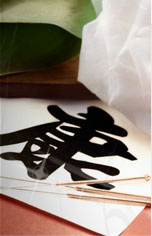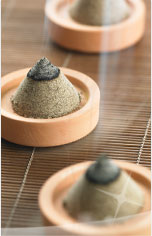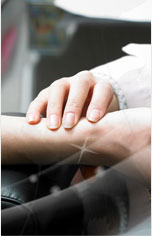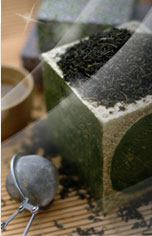The ideal time to start labor preparation acupuncture is week 36. Generally, a weekly acupuncture session until the onset of labor is recommended. If the expecting mother has other health issues, the program may start earlier and more frequent acupuncture sessions may be offered.
Labor preparation acupuncture will not trigger labor before the baby is ready to be delivered. Researchers now believe that when the baby is ready for life outside his mother’s uterus, his or her body releases a tiny amount of a substance that signals the mother’s hormones to begin labor. In most cases, your labor will begin only when both your body and your baby are ready.4 Acupuncture treatments before the due date are aimed at preparing the mother’s body for labor as efficiently as possible until the baby is ready to trigger the labor process and relieving problems occurring in the pregnancy.
Naturally Inducing Labor
Once a woman has reached full term or is overdue, acupuncture treatments are aimed at inducing labor. In TCM, labor is expected to begin when three factors occur simultaneously: 1) Yang activity replaces Yin material growth, 2) Qi flows freely and moves the Blood, and 3) the door of the uterus opens. When Qi flows correctly and the Blood circulates well, a harmonious labor follows with the onset of contractions, dilation of the cervix, rupture of the waters and expulsion of the fetus.
Certain acupuncture points stimulate the natural release of hormones to aid in cervical dilation and to trigger uterine contractions. These points are mostly avoided during pregnancy, especially in the first trimester, because of their ability to stimulate uterine contraction. Stimulating these acupuncture points in the final weeks of pregnancy aids the mother's body to produce its own hormones, so the mother and baby will more like experience a natural, less-traumatic onset of labor.
Below are examples of acupuncture points commonly used for inducing labor. Patients and/or their support people are often instructed to stimulate these points by applying firm pressure for 2-3 minutes on each points bilaterally at home, several times a day.
| |
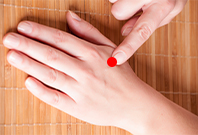 |
|
Li 4 (He Gu)
Between the web of the first and second finger, in the middle of second metacarpal bone on the hand.
It is on the highest spot of the muscle when the thumb and index fingers are brought close together.
|
| |
| |
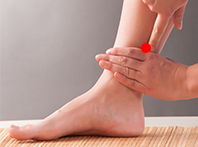 |
|
Sp 6 (San Yin Jiao)
In the medial side of the leg, fingerbreadths breadths above the highest point of the inner ankle, in the depression under the tibial bone. |
| |
| |
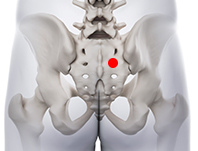 |
|
Ub 32 (Ci Liao)
in the second posterior sacral foramen, the irregular shaped opening located lateral to the bodies of the sacral vertebrae. |
| |
| |
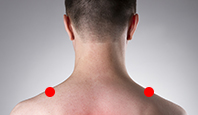 |
|
Gb 21 (Jian Jing)
At the highest point of the shoulder, directly above the nipple. |
| |
| |
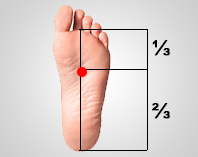 |
|
Ki 1 (Yong Quan)
On sole, in a depression between the second and third metatarsal bones, approximately ⅓ of the distance between the base of the second toe and the heel.
|
Labor inducing acupuncture treatment usually starts at week 39, as you and your baby are considered full term at 39 weeks; it may start little earlier or later, depending on the patient’s condition and other circumstances. Acupuncture treatment on every other day accompanied by self-administered daily acupressure are generally recommended until the onset of labor. If you are overdue, daily acupuncture treatments are strongly recommended to increase the possibility of natural labor progressing instead of medical induction. Some women may require only one or two acupuncture sessions before the onset of labor happens; for others, it may take a few more.
If induction is still needed, many women find that the process goes smoother with fewer complications. Wome treated with acupuncture have a more efficient labor following the administration of prostaglandin,with no further intervention required during labor, than women with no prior acupuncture treatment.5
Shorter and Less Painful Labor
Acupuncture not only prepares the body for labor and naturally induces labor but also encourages easier and more efficient labor by reducing the duration of labor and relieving labor pain.
In a study published in 1998, researchers found that women who received weekly acupuncture for four weeks starting at 35 week gestation had a significant reduction in labor duration compared to women who did not receive acupuncture. Mean difference of total duration of labor between acupuncture group and non-acupuncture group was -136.5 minutes.6
A randomised controlled trial study in 2002 demonstrated that acupuncture treatment during labour significantly reduced the need of epidural analgesia in childbirth (12% vs 22%). Women who received acupuncture assessed a significantly better degree of relaxation compared with the control group, and no negative effects of acupuncture were found in relation to the delivery outcome.7
An extensive study conducted on 607 women showed that the use of pharmacological and invasive methods was significantly lower in the group who received acupuncture compared to both the group received transcutaneous electric nerve stimulation (TENS) and the group received traditional analgesics. Researches in this study also found that the mean Apgar score (indication of newborn baby's physical health) at 5 minutes and umbilical cord pH value (indication of baby's blood oxygen level) were significantly higher among infants in the acupuncture group compared with infants in the other groups.8
Ear Points and Acupressure
Because many OB doctors are not open to the idea of using acupuncture needles during delivery, and it is not always possible to for us to be on call at all times to attend a birth, we use ear points and ask patient’s partner or support people to apply acupressure during labor. We found that using ear seed and acupressure is more practical because it does not restrict the movements of the women in labor; most women like to take up different positions, walk around the room or squat down as the labor progresses. Ear points and acupressure can be applied in all the birthing positions and even in water.
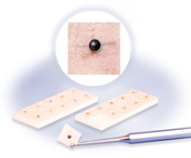
On your last acupuncture treatment before you go to the labor and delivery floor of hospital, your acupuncturist will place small ear pellets or ear seeds made of a Chinese herb, Wang Bu Liu Xing (Semen Vaccariae), on your ears, which can be remained in place until the baby is born. Your acupuncturist will give instruction on how to apply gentle pressure on the pellets to stimulate the ear points during labor.
Once you have gone into labor naturally or by medical induction, acupressure can be a useful tool to help reduce pain and encourage a smoother and shorter labor. This can be applied by your partner or support person with proper instruction in advance. Applying pressure to certain points enhances the efficiency of contractions for pain relief, reduces emotional stress during labor, helps the baby descend, and promotes delivery of the placenta.
Li 4, Sp 6, Ub 32, Gb 21 and Ki 1, the acupressure points used to induce natural labor, are also used during labor with two additional points, Lv 3 and UB 60.
| |
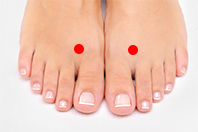 |
|
Lv 3 (Tai Chong)
On the top of the foot in the webbing between the big toe and the second toe. |
| |
| |
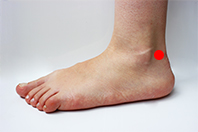 |
|
Ub 60 (Kun Lun)
In a depression between the tip of the external malleolus and the Achilles tendon. |
|

